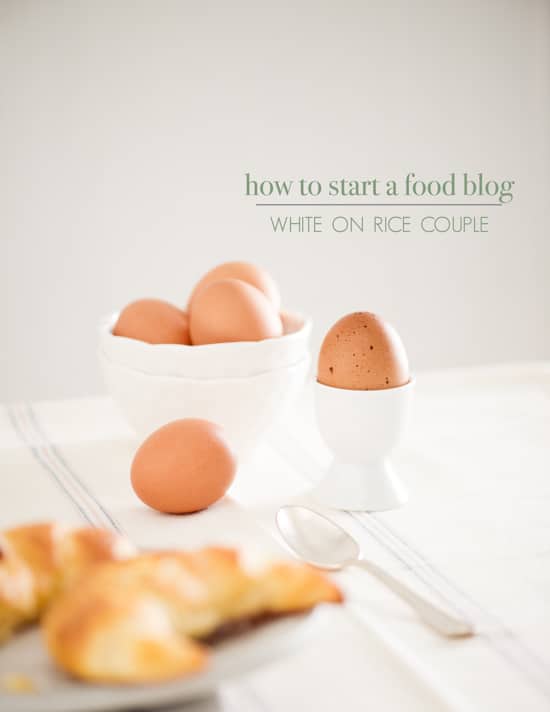Food Blogging Basics & Tools: How to start
Want to start a food blog? This write up is a long time in the making. Over the last few years we’ve been answering questions and mentoring new food bloggers behind the scenes. We receive many questions from people we meet at our conference panels and in private emails, that it’s wonderful to see this community grow with new voices, faces and content. We realized that we needed to make this info we’ve been sharing behind the scenes public and honestly, much more manageable.
It’s important for everyone to understand that blogging on all topics, not just food, is executed in different ways. And how each person defines and achieves their success is vastly different. It’s always interesting to see how each food blogger got to their point in blogging and what they consider is success to them.
Let’s discuss the basics.
Want to start a food blog? Here’s how we started. Below are resources and affiliate programs we have used and work well for us.
Every blogger has a different network of resources and in those later interviews, they will discuss those resources that work for them. But these are what we use and love.
1. Blog Name – Selecting a blog name to convey your voice, style and identity is very important. Quite honestly, we didn’t think about it too much when we came up with our random name and we pretty much broke all the rules. Our blog name, White On Rice Couple, has absolutely nothing to do with food, gardening, photograph or travel.
Why did we choose our name? Because we were probably drinking and built this blog on a whim, as a hobby and not as a business. A few margaritas late at night will do that to you— White on what? how about Rice? OK. Done.
So think about your blog name, what you want to do with it and where you want to go with it. Personal hobby or business?
-There are a ton of ways to do it, but we search for availability of a web domain and buy domains through Hover.
Hover is a internet domain name registration service. It’s a simple, clean and an easy way to manage your domains. If you like investing in domain names for future blog or websites, hover is a great place to manage all your lists.
Although Hover is not the cheapest, their prices are fair and upfront. Unlike other sites that may charge cheaper, Hover doesn’t nickle-and-dime you on additional features like private registration.
2. Choose a Blog Platform: We use WordPress.org and we love it.
3. Hosting your blog: Hosting for Free or Self-Hosting?
Free hosting is available on WordPress.com (different from WordPress.org), which means that your blog lies on their server.
- Your blog url will be FoodBlogExample.Wordpress.com
- Read more about WordPress.com here
- this is route is good for those of you who just want a simple place to share content without having to worry about servers and customization
- If you don’t plan on growing your blog beyond the basic pages and without specific customization, then this option is fine.
- Low to no cost option
Upgraded hosting and other features are also available on WordPress.com for additional fees.
- You can use a custom domain for your blog such as FoodBlogExample.com .
- Read about it here
- You will need to spend some money
Self Hosting- (WordPress.org) is the most customizable and allows you total control
- You can upload custom themes
- Ability to upload plugins
- You have complete control to change the code on your blog
- This route is for those to hope to expand on their blog and make it very specific to their needs
- This is what we do for our sites.
Still confused on WordPress.com vs WordPress.org? Here’s a couple links breaking down the difference- WordPress.com Explanation and DIY themes Explanation.
4. Choosing a reliable host. If you are going to self-host, you’ll need a provider to park your blog somewhere.
There are many web hosting servers, some good, some very frustrating. We look for reliable hosts, with great customer service and both BlueHost and Liquid Web have fit that bill. We have used both and have had great experiences with each and are pleased to recommend them.

Blue host offers everything you need to get started at a great price: email accounts, domain hosting and much more.

Since being on Liquid Web, we’ve loved the experience and always have great technical support. They have amazing customer service when we needed it on technical issues and have been very responsive when we have problems.
5. Choose a Theme or cool design for your blog

Today it has also developed into a great community of support when you want to customize further and continually works on becoming easier at the same time as being very SEO friendly. We love it and use a customized Thesis theme coded by Paul at ZelCreative.
4. Statistics and Analytics: as you build your traffic you might want a more advanced way to analyze your blog stats to understand more about where your traffic is coming from and what your readers are reading most.
Google Analytics is a great tool and it’s free.
This is a service offered by Google that allows you to see detailed specifics about visits to your site. Google analytics lets you measure basic information about your visitors and where they’re coming from.

5. Food Photography & Styling – capturing nice food photographs can be helpful in gaining attention to your recipe. But this takes patience, dedication to practicing and studying the art of food photography & styling.
Some great resources for food photography tips can be found here:
- Food photography tips from experts at TheKitchn.com
- Food Photography tutorials by Taylor Takes a Taste
- Tips from Todd Coleman at Saveur Magazine
- Great List of everything you need to know from Jenn Cuisine
- Our own list of past food photography tips from Todd & Diane
Once you start learning food photography and want to add to your collection of gear.
Adorama and B&H are great resources to start buying.
These are where we make all our camera gear online purchases. The prices are always competitive and you’ll often find products in which they’ll offer free shipping (B&H free shipping – Adorama free shipping).
6. Setting up social media & where to share your recipes. Start being a part of the online food community by connecting with everyone. Also, there are many great community sites that you can submit your recipes to. If accepted, your recipe will be shared within their community.
Have Fun,
diane and todd









This is so helpful as I as I am starting a food blog. I’m glad I found this house it will be a great help in getting started.
Great article, thanks for the tips! I am helping my wife start her own vegan food blog and your tips are really useful. Working for her, I’ve also made an in-depth review article of the 10 best WordPress themes for food blogs and recipes websites which can be found at: http://themesrule.com/10-best-food-recipes-wordpress-themes-2016/
Amazing post. This was absolutely invaluable to me in getting started on my blog. Thank you so much for generously sharing your knowledge and resources!
These information are enough for anyone to start a food blog. And of course wordpress is best option to start with. Many people want to just write things time to time and not become a full time blogger. For them I will suggest them to go to hubpages, squiddo, about.com and their are many more who pay to blog and you don’t need to worry about hosting, domain, links, promotion etc. Although great information.
Like the post. Nice to be food blogging and have such good guides to help along the way. Thanks
A great post and very helpful – thanks for sharing all your tips and advice.
Hi,
I’ve been adding to my blog. But I don’t seem to get many people who want to “follow”…..I do have seemingly a lot of people on the site as I added facebook and Pinterest. I don’t think these are “willing participants”…..
Seems to be just because I added FB? Can you give me some hints on how to increase the visibility and traffic to my site?
Excellent! I am just wondering how to Thank You :-D! I was wondering on how to start my blog and I just landed on the right place. Thank you very much. God bless more success for you.